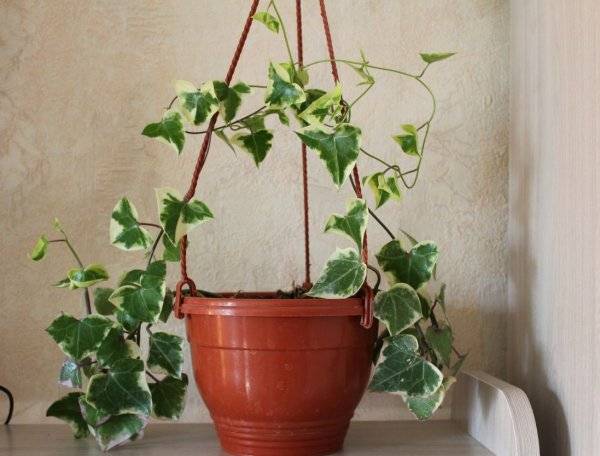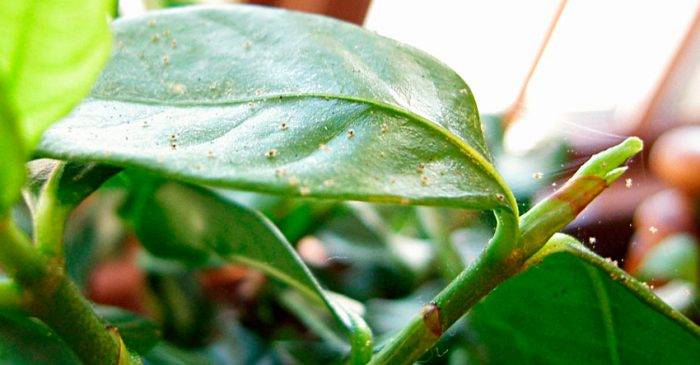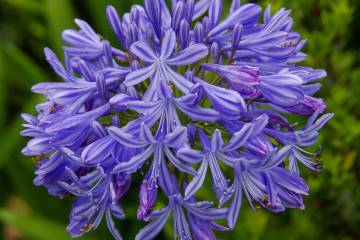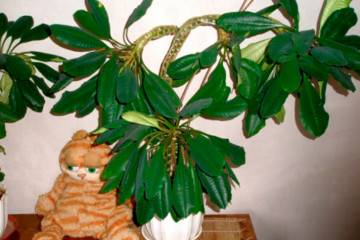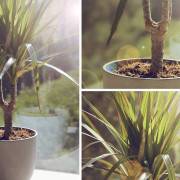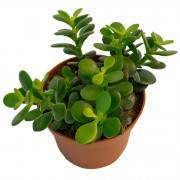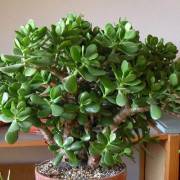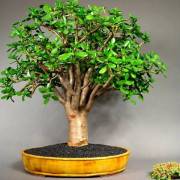Large-reed groundwort Senecio macroglossus
Content:
It is hard to argue that vines grow fast enough and, when properly shaped, have a decorative appearance due to their fleshy, waxed foliage. And if for all this the plant is unpretentious in care and blooms, then it is especially appreciated by flower growers. It is precisely this set of characteristics that the large-reed ruscus possesses - an African succulent, also known as Natal ivy.
Large-lingual variegated groundwort: description of appearance and characteristic features
Large-reed groundwort (Macroglossus) is a tall vine with medium-sized fleshy leaves. A characteristic feature of the leaves is their triangular or pentagonal shape with a prominent segment that resembles a tongue. The color of the foliage is bright green or variegated with yellowish streaks and stripes.
Due to the fact that the plant is widespread in the wild in the African province of Natal, it is often called Natal ivy. Despite some external similarity with ivy, it is still a succulent, as it has a characteristic fleshy and dense foliage with an obligatory wax coating, not typical for ivy.
The cuttings are brownish, purple or violet in color, and in early spring, the succulent blooms with pale yellow small flowers that look like chamomile.
The genus of plants to which the large-reed ruscus belongs is very diverse and extensive. At the same time, the absolute dissimilarity in appearance of some varieties is striking. In addition to the large-tongue, other types of groundwort deserve attention:
- creeping groundwort is a short evergreen perennial shrub with lanceolate grayish-blue leaves and white flowers;
- ficus rootwort (blue) is a very unusual species. The plant has narrow and elongated, upward-directed leaves painted in a bluish-gray color;
- Haworth's Ragwort (Senecio Haworthii) is a perennial low bushy plant with cylindrical leaf plates tapering towards the top, arranged in a spiral. Above, the leaves are covered with a grayish-white tomentose bloom;
- stout groundwort (Senecio Crassissimus). This species looks a bit like a fat woman, only its leaves are oval with a pointed end and a rough surface. Grayish-green leaves are colored reddish along the edge;
- Herrein's rosewood (Senecio Herreianus) - ampelous plant in the form of densely growing and branching shoots with small leaves of bright green color, resembling gooseberry fruits in shape;
- Fulgens (fiery) Leaves are flat, wide, rounded with a bluish-gray bloom. It got its name thanks to its bright orange-red flowers.
Caring for a large-reed rootworm at home
The ground plant is a plant that does not require particularly careful care, but adherence to the basic principles when growing is necessary.
Lighting and temperature control
The plant needs bright lighting, but the light should be diffused. Therefore, when the flower is located on the southern windows, it must be shaded.
The temperature at which the rose flower will feel good is required different in the daytime and at night: during the day, 23-25 ° C is permissible, and only 12-16 ° C at night. These are the indicators for the summer period, in the winter time it should not exceed 15-18 ° С, although it can drop to 12-13 ° С.
Watering rules and humidity
Watering the ground plant, senezio as it is scientifically called, should be done quite often, but when the top layer of the substrate dries up, when it comes to the spring-summer period, when the plant is actively growing. In winter, especially if the vines provide a dormant period, watering is done much less often and should only protect the plant from shedding foliage.
Humidity ivy, unlike many of its fellows, loves moisture. Therefore, the plant is often watered, especially in the summer. In winter, this procedure is permissible for flowers that are in a heated room. Occasionally, the vine is also bathed in the shower.
Top dressing and soil quality
The main conditions for choosing soil for a homegrowth are its low acidity, not too much nutritional value and high friability and drainage, that is, it must pass both water and air well.
Top dressing of the groundwort is carried out only in spring and summer 1-2 times a week using a mixture for ornamental house plants.
Flower container size
When planting the groundwort, they pick up a not too large and not deep, but wide flowerpot. It is good if it is a container made of natural materials, but the presence of drainage holes is mandatory in any case. The root system is the weak point of many succulents, which is why the choice of a pot should be approached responsibly.
Features of plant transplant
A rootwort transplant is performed as needed every few years. They pick up a new pot not much more than the old one. When carrying out the procedure, be sure to place a layer of drainage material on the bottom of the flowerpot.
Flowering and dormant period of the plant
The flowering period of the plant occurs at the end of winter - early spring, after the plant has rested. In general, the fact of flowering succulents suggests that the cultivation of the flower is carried out correctly, and the plant feels great.
Starting from the beginning of autumn, watering and the temperature at which the plant is kept is gradually reduced and the flower is given time to rest in order to gain strength before future flowering.
How to propagate Senecio macroglossus
Reproduction of Senecio is not particularly difficult. It is possible in several ways:
- using cuttings. They are cut and rooted in a moist substrate. They sprout pretty quickly;
- using layering.This method is easier to execute and very effective. With the help of it, denser plantings are formed in one flowerpot and the plant is planted in separate containers;
- with seeds. This is a rather laborious process, besides, seed germination is rather low.
Possible growing problems
The main problem when growing a large-reed rose is its tendency to be affected by various pests (aphids, scale insects, thrips, spider mites), in the fight against which treatment with soapy water (if we are talking about damage to the aerial part of the plant) or insecticidal solutions helps.
The large-reed groundwort is a perennial liana with fleshy leaves and a wax bloom characteristic of succulents. A plant at home can grow up to 2.5-3 m, so it needs to be cut and shaped. The large-reed rootworm, or rather caring for it at home, does not create any particular problems. You just need to adhere to certain rules, and then at the beginning of spring the plant will delight you with small light flowers, similar to chamomile.
